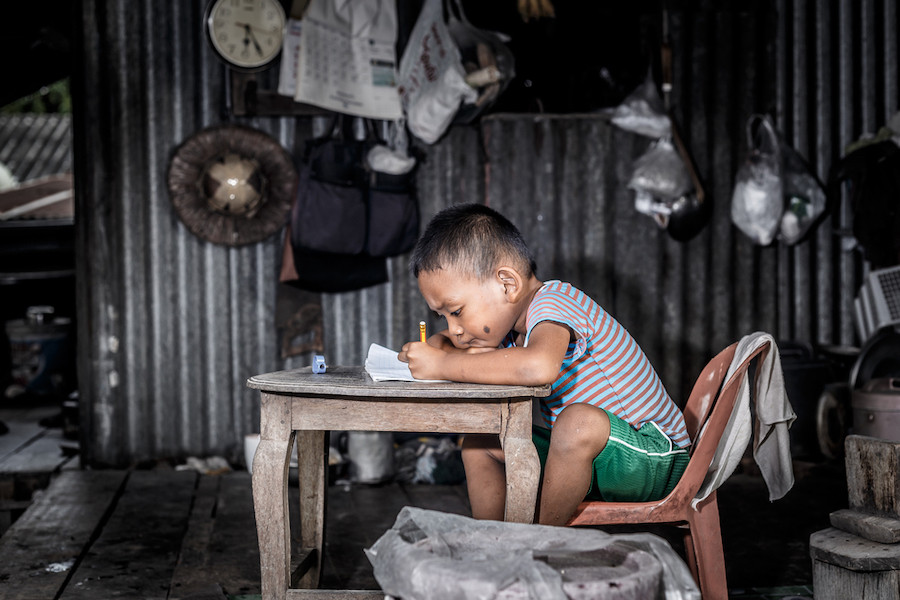Popular Reads
Top Results
Can't find what you're looking for?
View all search resultsPopular Reads
Top Results
Can't find what you're looking for?
View all search resultsInvesting in people: ASEAN’s key to better development
ASEAN as a whole has been a standout success story in its overall development. Yet on average, education, skill development and health indicators are below what is expected given ASEAN’s income levels.
Change text size
Gift Premium Articles
to Anyone
C
ountries in ASEAN have achieved strong economic growth and substantially reduced poverty over the past 20 years. Deep political commitment to effective policies has lifted over 100 million people out of poverty since 2000.
ASEAN as a whole has been a standout success story in its overall development. Yet on average, education, skill development and health indicators are below what is expected given ASEAN’s income levels. There are also wide disparities in life expectancy, job productivity and education quality across the region. And within countries, children belonging to the poorest 40 percent perform markedly worse than those in the wealthiest 20 percent of families.
Protecting ASEAN’s impressive gains over the past two decades will require prioritizing investments in people — that is, human capital. This is a major economic and also moral challenge for ASEAN leaders, and one that the World Bank will continue to support through its engagements in nutrition, learning, social protection and health, which together represent a total investment of over US$3 billion across the region.
This week in Bangkok, ASEAN ministers are coming together at a high-level meeting on human capital development to discuss the strong commitment needed to pursue solutions that work.
Consider the costs. A child born in ASEAN today can be expected to achieve, on average, just 56 percent of her potential productivity compared to a child born in a country with high-performing health and education systems. Almost one in three children are stunted in growth from chronic undernutrition, putting them at risk of cognitive and physical limitations that may last a lifetime.
Take Thailand, which, in the past 30 years, reduced rates of stunting from 25 to 11 percent, thanks to targeted, community-based nutrition programs.
Fifteen percent of today’s 15-year-olds will not reach age 60. Premature deaths are caused mostly by noncommunicable diseases, particularly diabetes, cancer, respiratory and cardiovascular diseases. Populations in several countries are also rapidly aging, raising demands for social protection in the form of health care and income. ASEAN includes some of the best performing education systems in the world, but also others that struggle to perform.
Many workers in ASEAN’s economies find only unstable, low-quality employment. Large portions of wage workers are not covered by a work contract and face constant risk of unemployment. This is partly because job growth is happening less in high-productivity sectors and more in low-wage services. Women, older workers, ethnic minorities and rural residents are more likely to be in low-quality jobs, exacerbating existing inequalities and marginalization.
But ASEAN has overcome tough challenges before, and through the concerted efforts of governments, citizens and the private sector, can close its human capital gap.
Take Thailand, which, in the past 30 years, reduced rates of stunting from 25 to 11 percent, thanks to targeted, community-based nutrition programs in areas with high levels of poverty. This successful approach brought together health, agriculture, education, water and sanitation to address malnutrition. A corps of trained village health volunteers implemented nutrition programs and monitored progress throughout the country.
Vietnam also stands out in the region with its high-quality basic education system, achieved through strong commitment to educational development and substantial public spending. It attracted and supported qualified teachers, invested in preschool, and conducted assessments to make teachers and schools accountable for the quality of education they deliver.
How can others in the region achieve similar results? First, by finding opportunities to spend money more effectively and tying it to concrete results. Second, in many countries, funding for health, education, social protection and social safety nets could both be higher as a proportion of the national budget.
Training the low-skilled workforce through informal education will also be important. To compete in the labor market of the future, workers will need solid foundational skills in math and literacy, socio-behavioral and higher order cognitive skills and digital literacy.
To achieve all of this, close alignment and coordination at all levels of government and across ministries will be critical, not only for those working in education and health, but also social welfare, planning, agriculture and statistics agencies, among others. Efforts to close human capital gaps will be more effective if they are implemented with the right amount of financing, and equally importantly, within an enabling policy environment.
Countries can meet the various connectivity and logistics challenges inherent in large-scale delivery of social services by maximizing the use of modern technologies.
Without fully realized human capital, countries cannot sustain economic growth, will not have a workforce that is prepared for the more highly skilled jobs of the future, and will be unable to compete effectively in the global economy.
As ASEAN leaders rise to this critical challenge, we can ensure the region remains a development model for the rest of the world as it pursues a secure, sustainable and prosperous future for all its people.
***
Victoria Kwakwa is a World Bank vice president for East Asia and Pacific. The views expressed are her own.










